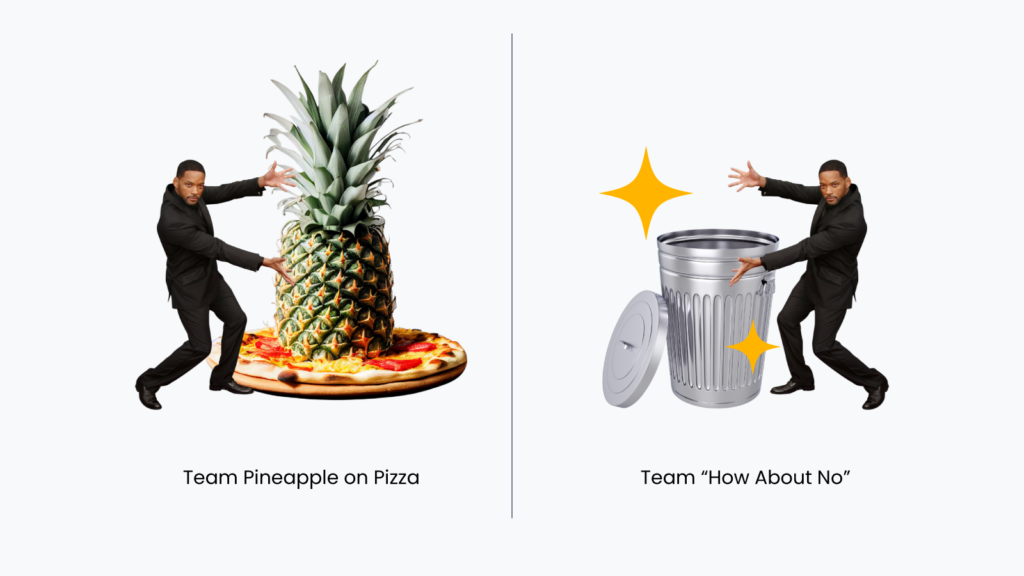Building a cohesive and high-performing project team requires more than just a group of skilled individuals. It demands a shared sense of purpose, effective communication, and a strong bond among members.
This is where team building activities come into play and can be beneficial to teams. Let's talk about some ideas you can try with your project teams.
What Are Team Building Activities?
Team building activities cover a range of exercises, games, and challenges that are designed to strengthen the bonds between team members. They also enhance collaboration and improve overall team performance.
These activities can take on many forms, including:
- outdoor or indoor adventures
- problem-solving exercises
- brainstorming workshops
- ice-breaker activities
- interactive workshops
The main objective is to create an environment and culture that promotes trust, communication, and a sense of belonging among team members.
Team building exercises can be done with remote teams or teams that are based in an on-site (office) location. Tools such as Zoom, whiteboards, pieces of paper or post-it/sticky notes, and online templates can be used.
In terms of when team building activities should be done, there’s no specific timing. They can be done as part of an onboarding process with new hires, when a project team is formed, when a team is developing a common goal, or when a team leader is trying to improve communication, creative thinking, and camaraderie among a team.
At a macro level, team building activities can be done to support employee engagement and to help define and support a company culture.
Why Are Team Building Activities Important?
Have you ever been part of a team that just didn’t jibe or work well together? Something was off with the team dynamics and it didn’t feel like a collective of people. Team building activities are more than just fun and games a group of people do.
They serve a vital purpose in nurturing a positive culture (work and social) within project teams.
Here are some reasons why team building activities and team building games are important to make sure your team vibe doesn’t feel off.
- Build trust: Trust is the foundation of any successful team. Team building activities provide opportunities for team members to connect on an interpersonal level, foster trust, and create a safe space for collaboration and engagement.
- Improve communication: Effective communication is vital for project success. Team building activities encourage open and honest communication. It also helps team members understand each other’s strengths, weaknesses, and communication styles.
- Enhance collaboration: Collaboration is key to successful project delivery. Team building activities promote collaboration by breaking down barriers among team members, fostering the sharing of ideas, and promoting a collective mindset and creative thinking.
- Boost morale and motivation: Engaging in enjoyable activities outside of the regular/office working hours and environment can help to boost team morale and motivation. It helps team members relax, recharge, reduce stress, and develop a positive attitude towards the project and work.
- Develop problem-solving skills: A lot of team building activities involve solving challenges or puzzles. These activities can sharpen problem-solving skills, encourage creative and ‘outside-the-box’ thinking, and improve the team’s ability to overcome obstacles together.
5 Team Building Activities To Align Your Team
Now that we understand the importance of team building activities, let’s take a look at some of the best team building activities that you could use with your team.
1. Create A Team Working Agreement
Working agreements and/or team charters are a great way to define and build a culture for a team.
A working agreement is an understanding among team members of how they will work together, collaborate, and communicate. Not necessarily as formal as a team charter, a working agreement should be an honest and sincere reflection of what the team feels is important and should capture how interactions and collaborations will take place within the team.
Used as a team building activity, team working agreements can help to create a sense of belonging and inclusiveness when forming a new project team. It can also be a fun way to do new hire onboarding and team formation when a project team is assigned at the start of a project.
It can help a team outline how collaboration and communication will occur. If you’re new to what a team working agreement is, check out this mini-course to help you create one for your team.
2. Office Debates

It’s not all fun and games!
Just kidding—games like office debates can be not only fun, but they can also help to address any gaps or issues a team may be having.
In particular, office debates help teams to build skills in communication, negotiation, persuasion, and presentation.
This activity can be done with a smaller team or large group.
Team members are paired up in small teams of two and given a topic to debate. Each person will have to present an argument to the audience (the rest of the team) about why their thing is the best or why the team should use it.
The debaters will need to present a convincing argument in a presentation of five minutes or less. Similar to a game show, the audience will then vote on who won the debate.
Debate topics do not need to be serious. They can be fun and promote conversation. Topics could include:
- Ford vs. Ferrari
- Coke vs. Pepsi
- Android vs. iOS
- Coffee vs. tea
- Console vs. PC gaming
The office debates activity can be done as a virtual team building activity via Zoom or in-person in a conference or meeting room. It can help develop the communication skills that will be needed between team members during the project.
3. Ice Breakers
Creating a trusting, effective team, starts with people getting to know know each other. Playing Two Truths and a Lie is a great way to make that happen.
In this game, team members are asked to share three details about themselves: two things that are true and one that is a lie. The rest of the team has to guess which one is the lie.
Information shared does not need to be very personal or confidential. Members of your team should not feel that they are being pushed outside of their comfort zone by doing this activity. Participants should feel comfortable disclosing it to their teammates.
Examples include:
- Favorite foods
- Hobbies
- Subject studied in school (college, university, etc.)
- Places visited
- Famous people/celebrities they may have met
- Favorite movies and/or TV shows
- Any other fact or detail a participant wants to share
The underlying assumption is that by sharing a detail about themself, a person also shares a bit of vulnerability. If they feel that they can be open and vulnerable with their teammates, they can establish a basis of trust, and transparency.
This team building exercise can also be done on-site, in a conference room, or virtually. Also, this activity does not need a dedicated facilitator as all team members can simply pick the next person who should share next.
4. Scavenger Hunt
Games like scavenger hunts, where teams are tasked with finding specific items within a time limit, are a great team building activity. They can help teams build communication, problem solving, and time management skills.
Scavenger hunts can be done in-person or virtually. A large group can be broken into smaller groups to ensure that all team members can be active participants.
This activity can also be combined with another activity, such as an escape room or office trivia (where participants may have to correctly answer questions to get a clue).
5. Volunteering Initiatives

Having empathy and the willingness to help others in need is a key component for developing emotional intelligence. Empathy and the desire to help others can be developed and practiced through a team volunteer initiative.
Our communities are filled with organizations and not-for-profits that could benefit from having a team from your organization volunteer.
Whether it is an activity like preparing meals for a soup/community kitchen or volunteering with an organization like Habitat for Humanity, there are lots of ideas and causes worthy of support. Many not-for-profit organizations can work with you to plan a team building activity depending on the amount of time available and the needs of the organization.
The volunteering initiative you choose might directly support your org’s corporate social responsibility or philanthropic strategy, your company culture, or it could be a cause or not-for-profit that your team is interested in.
Volunteering activities can also be combined with icebreaker games by putting team members into small groups to allow team members an opportunity to get to know their teammates.
Go Simple Or Go Extravagent
Team building activities don’t have to be boring or cost a lot of money. There are options for every budget, including:
- In-person escape rooms
- Obstacle courses
- Scavenger hunt s
- Board game evenings outside of the workday hours
- Working on massive jigsaw puzzles or Jengas
- Lego-building competitions
- Lunchtime karaoke
Remember, you can do fun team building activities at any phase of Tuckman’s 5 Stages of Team Development—whether a team is forming or performing.
If you are looking for more tools and ways to engage your project team, check out The Digital Project Manager newsletter.


